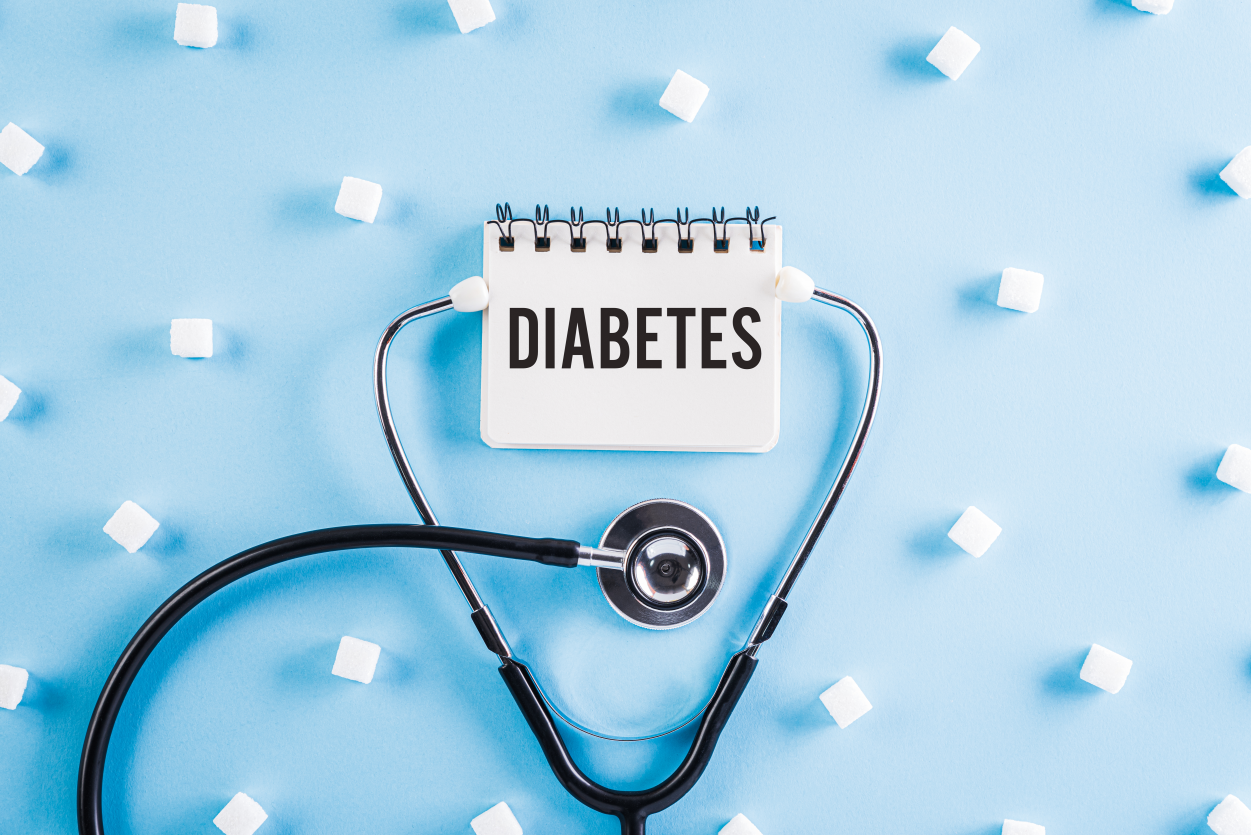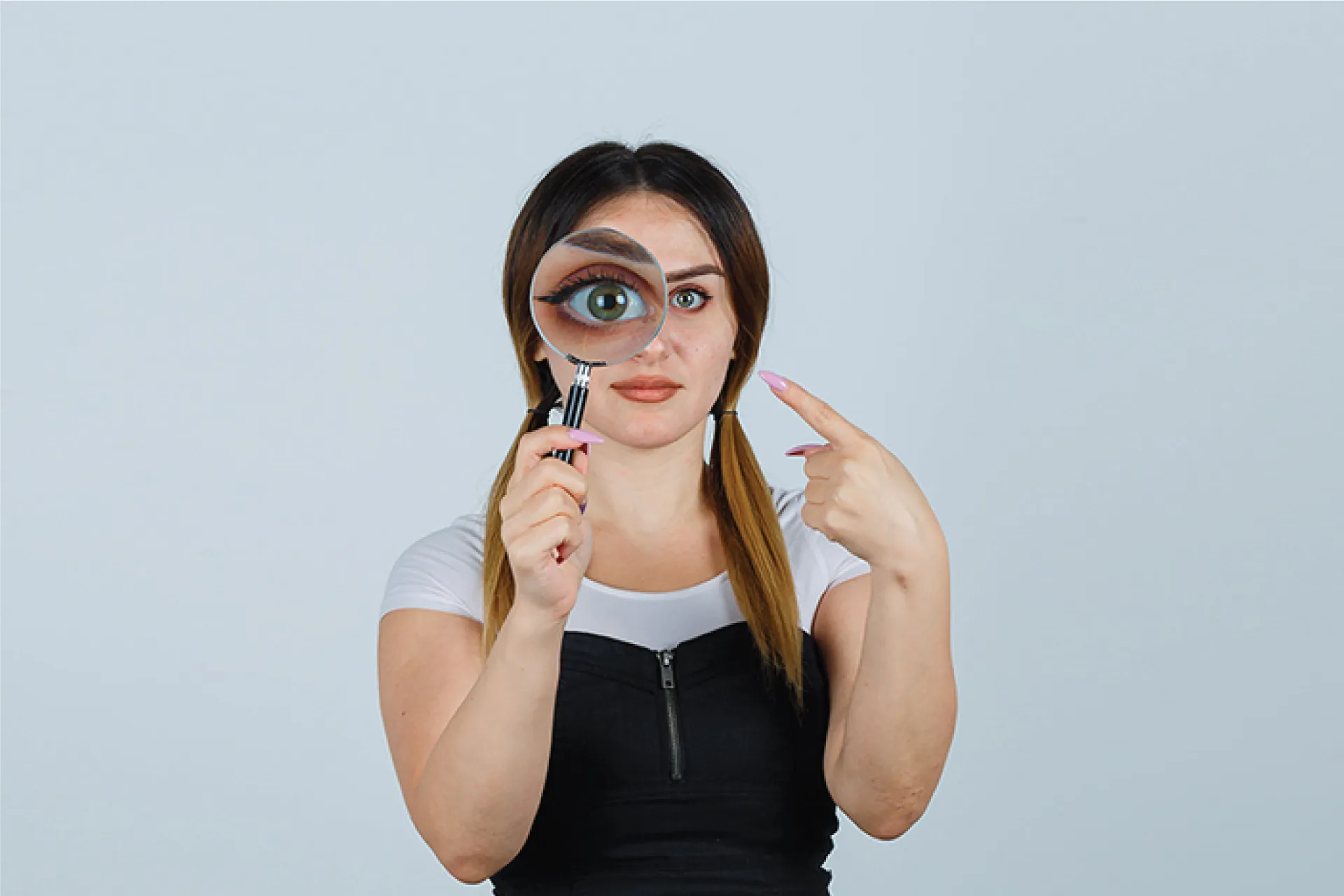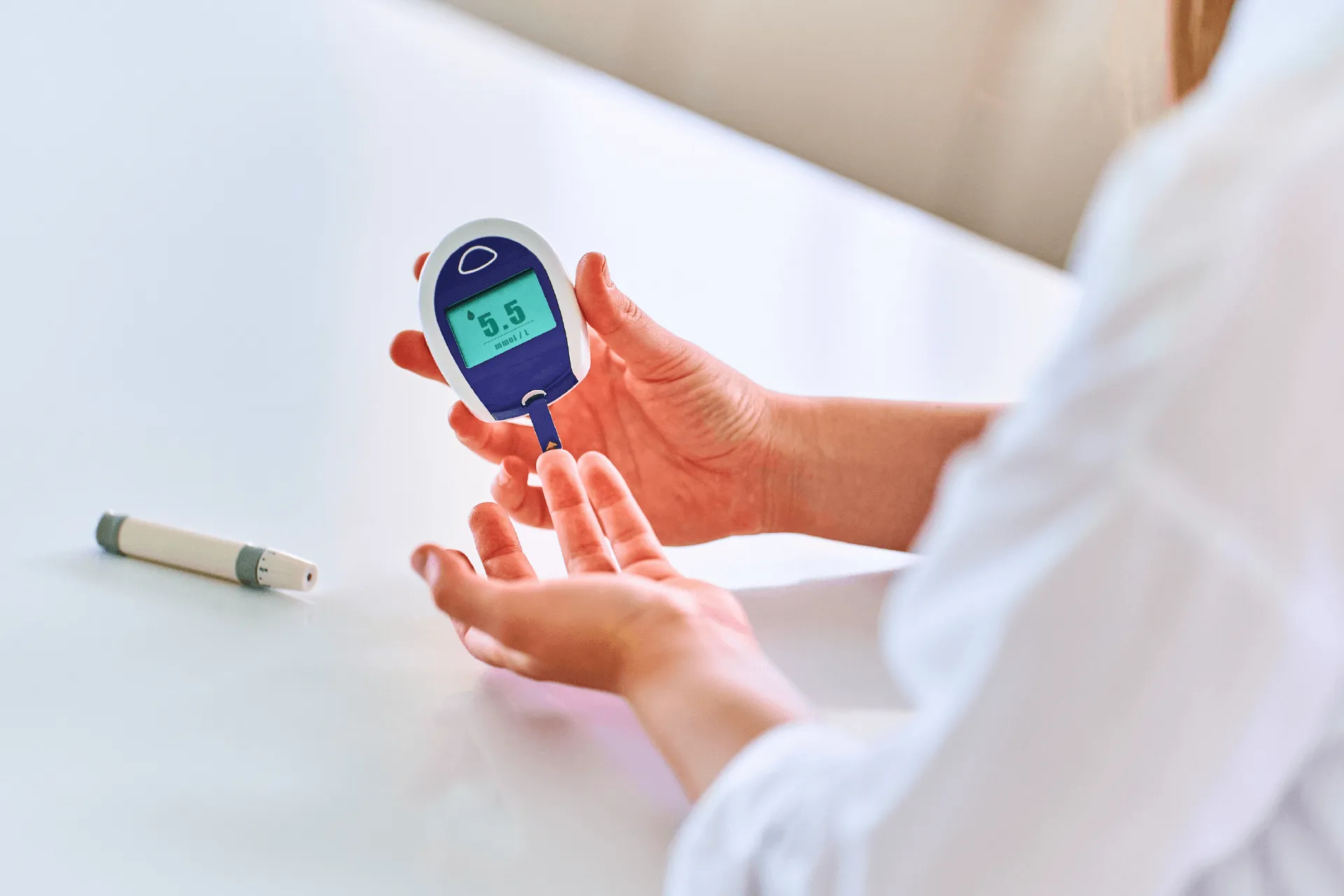General Physician | 13 min read
Check Out the Early Signs & Symptoms of Diabetes
Medically reviewed by
Table of Content
Key Takeaways
- India is second in the world for the largest number of people suffering from diabetes.
- The insufficient release of the insulin hormone/elevated insulin resistance in the body causes high blood sugar symptoms
- If you’re already experiencing some of the symptoms of diabetes mellitus, it is imperative that you visit a doctor.
With around 77 million diabetics, India is second in the world for the largest number of people suffering from diabetes. This is why you need to understand what diabetes mellitus disease is and adopt practices to prevent and manage it. As per the diabetes definition, the term refers to a group of metabolic disorders that are characterized by high blood sugar levels mainly arising due to a defect in insulin secretion or its action.
The insufficient release of the insulin hormone or elevated insulin resistance in the body causes high blood sugar (hyperglycemia) and related symptoms. There are a few common diabetes types, namely:
- Type 1 diabetes
- Type 2 diabetes
- Gestational diabetes
All of these developments are for different reasons, some hereditary and others due to lifestyle, but they often have similar symptoms. Naturally, knowing how to identify these signs helps you get an early diagnosis and a jump start on treatment. To that end, here are 9 early diabetes symptoms you should watch out for.
Also Read: Type 1 and Type 2 diabetesSymptoms of Diabetes
A Heightened Feeling of Hunger
When you consume food, your body digests it and breaks it down into glucose, which is then absorbed as energy. However, in diabetics, not enough glucose is absorbed by the cells from the blood. This is when you may experience polyphagia, which simply means intense hunger, as you’re not getting enough energy from your food. You may experience such a symptom even after just eating and this is a warning sign of diabetes type 2 that you should take note of. If you feel hungry often, even after consuming a heavy meal, go see a doctor.
Delayed Healing
Another key symptom to look out for as an early sign of diabetes is delayed healing. If you’ve got a cut, bruise, or some form of injury and it is taking longer than usual to heal, then you should visit a doctor. Delayed healing is linked to diabetes, the reason being that the high sugar levels in the blood damage the body’s nerves and narrow its blood vessels. This can impair circulation, restricting the delivery of nutrients and oxygen to these wounds or sores. Moreover, wounds that take longer to heal also raise the risk of infection, even as having high blood sugar levels for a long time can hurt your immune system.
Frequent Urination
Known as polyuria, frequent urination is a condition linked to diabetes or its onset and, here, it is caused due to the higher concentration of glucose in the blood. As a result, the kidneys overwork to filter this out, and this extra glucose, in turn, draws in more water. This can cause you to urinate more frequently, often more than 3 liters in a day, which is almost double the normal average of 1 to 2 liters. Frequent urination or polyuria is a dangerous symptom to have as it can cause severe dehydration and kidney damage. If you notice an unusual spike in the need to urinate on a regular basis, consult a doctor immediately.
Increased Thirst
You may also find yourself feeling extremely thirsty throughout the day. This symptom is called polydipsia, which is a known symptom of diabetes. It is caused by hyperglycemia or high blood sugar and is, in fact, an early sign of diabetes. Polydipsia is compounded by the problem of frequent urination. In such cases, you must do your best to stay hydrated as polydipsia can be accompanied by dryness of the mouth, and loss of water can cause dehydration.
Skin Discoloration
A noticeable early sign of diabetes is skin discoloration. This is when you develop patches of darker skin on the folds of your neck, over the knuckles, on the armpits, near the groin, or elsewhere. This is called acanthosis nigricans, which is linked to insulin resistance. So, if you notice random patches on your body and you aren’t overweight or suffer from illnesses that this symptom is linked with, you may be headed towards diabetes type 2.

Extreme Fatigue
As mentioned, lack of insulin or a heightened resistance to it results in lesser glucose being converted into energy. As a result, prediabetics or diabetics are often fatigued, or overly exhausted, even if no physically demanding task was performed. Moreover, fatigue can also be a result of dehydration or kidney damage, both of which are also problems that arise from being diabetic.

Blurry Vision
Having high blood sugar has many side effects, one of which is blurry vision. This is because the excess sugar in the blood damages the blood vessels in the eyes and this affects vision. In the early stages, this can be helped with proper diet and medication. However, if left untreated, the symptom may worsen and result in complete blindness.
Itchy Skin Coupled with Yeast Infections
As a result of dehydration brought on by polyuria, it isn’t uncommon to lose moisture from your skin. Dry skin can be itchy and can cause redness. Moreover, excess sugar in the bloodstream also leads to yeast infections on the moist areas of the body such as the mouth, genitals, sand armpits.
Unexpected Weight Loss
Unexpected weight loss can occur due to two main reasons: dehydration and muscle breakdown. In the first case, the frequent need to urinate can cause dehydration, which leads to weight loss. In the second case, the body’s inability to process glucose causes it to turn to fat and muscle reserves for fuel. As a result, there is a decrease in overall body weight. Sudden weight loss is a sign of diabetes type 1, but diabetes type 2 cannot be excluded.
Pain, tingling, or numbness in the feet or hands
Excessive blood sugar levels can harm the nerves and disrupt blood flow. This can result in discomfort, tingling, or numbness in the hands and feet in persons with type 2 diabetes. It is referred to as neuropathy. If a person does not get treatment for their diabetes, it can develop or worsen over time and result in more serious consequences.
So, whether you’re susceptible to diabetes type 1 or may be at risk of developing diabetes type 2, it is important that you’re aware of these early signs. This knowledge helps you stay alert and can help with an early diagnosis, which is key to keeping diabetes in check. Moreover, picking up the early signs also helps diabetes treatment as you could get away with a specialised diet without the need for medication. However, if you’re already experiencing some of the symptoms of diabetes mellitus, it is imperative that you visit a doctor.
Symptoms
Diabetes Type 1
Type 1 diabetics may experience nausea, vomiting, or stomach aches. The symptoms of type 1 diabetes can become severe in as little as a few weeks or months. The onset of type 1 diabetes can occur at any age, but it typically begins in children, teenagers, or young adults. You may observe the following:
An unexpected decrease in weight
The patient’s body will begin burning muscle and fat for the energy required if it cannot obtain it from the diet. Even when your eating habits have not altered, you might still lose weight.
Vomiting and nausea
The human body produces ketones when it switches to fat burning. These ketones may accumulate in your blood to risky levels, a condition known as diabetic ketoacidosis that may be life-threatening. In addition, your stomach may feel ill after consuming ketones.
Diabetes Type 2
It can take many years for type 2 diabetes symptoms to appear. Some people seldom ever experience any symptoms. Although type 2 diabetes increasingly affects kids and teenagers, it characteristically develops in adults. Symptoms naturally appear after your blood glucose level has stayed elevated for a long time. These are:
Candida (Yeast) infections
These happen to people with diabetes of both sexes. Glucose, a food source for yeast, helps the infection grow. Every warm, moist fold of skin supports the growth of infections, including:
- Between the digits and the toes
- Under the bust
- In or near the genitalia
Slow-healing cuts or sores
High blood sugar levels over time can impair your blood flow and harm your nerves, making it difficult for your body to heal wounds.
Legs or feet that hurt or are numb
Another effect of nerve injury.
Complications of type 2 diabetes may show as follows:
- Slowly heaving wounds or sores
- Skin itches (usually around the vaginal or groin area)
- Yeast infections are common
- Recently gained weight
- Acanthosis nigricans; dark, velvety skin changes on the patient’s neck, armpits, and groyne
- Hands and feet that are numb and tingly
- Reduced vision
- Erectile Dysfunction (ED)
Gestational Diabetes Symptoms
Pregnancy-related high blood sugar typically has no symptoms. The expecting mother may observe a slight increase in thirst and frequent urination. Between 24 and 28 weeks of pregnancy, the doctor should check you for gestational diabetes if you are expecting. You can adjust as necessary to safeguard your health and your child's.
Early symptoms of Diabetes in Women
Frequent infections in a brief time
As the immune system is weakened by high blood sugar, you could become more susceptible to infections. In addition, sugar spikes cause hyperglycaemia, which renders your organs more vulnerable to viral and bacterial infections.
Abrupt mood changes
This is due to how elevated blood sugar disrupts the harmony of hormones. Unstable hormones bring on emotional weariness. Significant tension, worry, and despair are concerning signs of high blood sugar.
Frequent urination
Your kidneys start working overtime to filter and absorb the extra blood glucose when they observe a spike in blood sugar. As a result, you will have increased thirst due to improved kidney function, drink more water, and use the restroom more frequently.
Dehydration
You must drink extra water because quick renal function and frequent urination will make you thirsty.
Dry or Itchy Skin
People with diabetes also experience itching in their hands, feet, genitals, butts, and even the corners of their mouths due to dehydration and poor circulation.
Heavy Hair Fall
One frequently disregarded sign of elevated blood sugar levels is diabetic hair loss. Substantial hair loss from diabetes in women is possible.
Spots of Dark Skin
Prediabetes signs include dark, velvety patches of skin on specific body areas. Prediabetics frequently run the risk of eventually developing type 2 diabetes.
Chronic Headaches
In women, moderate to severe headaches or morning wooziness may be the first symptoms of diabetes.
Symptoms of high blood sugar in women sometimes include nausea, which is also extremely prevalent.
Blurring of vision
The nerves in your eyes are harmed by diabetes types 1 and 2, which impair vision. Diabetes can, in extreme situations, cause glaucoma or possibly blindness.
The Legs or Arms Feel Numb
Women with diabetes may also have tingly arms and legs. The medical term for this is diabetic neuropathy. Long-term high blood sugar levels can harm nerves and muddle the messages your brain sends to your hands or feet. Some areas could experience a tingling sensation as a result.
Persistent Hunger
Severe hunger pangs can also result from hormonal imbalance and the emotional distress that hyper- or hypoglycaemia can induce.
Suddenly Dropping Weight
Another alarming sign of diabetes in women that is sometimes disregarded is fluctuating weight. Insulin resistance affects the production of energy and the absorption of sugar. Your body then develops new strategies to replace glucose.
Fatigue without Reason
Together with acute fatigue, diabetes affects a lot of female patients. Even simple tasks like preparing tea or cleaning your room can leave you feeling worn out.
Men's early diabetic symptoms
Men and women both exhibit certain early diabetes warning signs and symptoms, such as:
- Excessive hunger and thirst
- Often urinating (from urinary tract infections or kidney problems)
- Gain or loss of weight
- Fatigue \irritability
- Distorted vision
- Scars that heal slowly
- Nausea
- Skin maladies
- Skin darkening in body crease areas (acanthosis nigricans)
- Fruity, sweet, or acetone-smelling breath odour
- Numbness and tingling in the hands or feet
Diabetes has specific warning signs and symptoms for males, including:
Erectile Dysfunction (ED)
Sexual issues do result from diabetes because of its effect on the autonomic nervous system (ANS). The ANS controls your blood vessels' ability to dilate or constrict. Diabetes can cause harm to the penis' blood vessels and nerves, leading to ED.
Retrograde Ejaculation
Retrograde ejaculation can also occur in men with diabetes. Some semen is consequently discharged into the bladder as a result. A noticeable decrease in semen delivered during ejaculation or a lack of ejaculation may be regarded as symptoms.
Urologic Problems
Males with diabetes may get urologic problems due to diabetic nerve damage. They consist of the following:
Urinary Tract Infections (UTIs)
- An overactive bladder
- Difficulty controlling urination or leaking urine
Further Sexual Difficulties
You might have lower testosterone levels than average if you have diabetes. ED and other sexual health problems can result from low testosterone. A lower sperm count could also occur. Conception may become more challenging as a result.
Also, you risk getting penile curvature or Pyronine’s disease. The curve may make it more unpleasant and difficult to engage in sexual activity.
Although most symptoms that affect either sex are often the same, experts do not distinguish between type 1 and type 2 diabetes symptoms in males. It is not based on a person's sex but rather on how long it takes for symptoms to appear. That type 1 symptoms typically worsen more quickly.
Diabetes symptoms in adults
Compared to Type 1 Diabetes, Type 2 Diabetes symptoms and signs frequently appear gradually. As a result, patients may have type 2 diabetes for years without realising it. When present, top signs and symptoms may include:
- Frequent urination: A high blood sugar level is indicated by more frequent bathroom visits than usual, particularly at night. The kidneys have to work harder to eliminate extra sugar from the blood when you have diabetes. Your kidneys spill extra sugar into your urine when they cannot keep up, which makes you urinate more frequently.
- Recurring infections: Yeast and bacteria feed on the extra sugar in your urine. They prosper when given food and a warm, moist environment. Thus, persons with diabetes frequently have yeast or urinary tract infections, especially women.
- Dehydration: Excessive thirst can be brought on by frequent urination. Yet, drinking more will not quench your thirst.
- Perpetual hunger: Your body transforms the food you eat into glucose, which your cells use as energy. But diabetes prevents the cells from properly absorbing glucose, which prevents your body from getting enough energy from your food. As a result, even after eating, your body is always searching for food, which causes constant hunger.
- Unexpected weight loss: If your body cannot obtain sufficient energy from your meals, it will begin to burn muscle and fat reserves. Hence, you might still lose weight even if your diet has not changed.
- Fatigue: Lack of sufficient fuel for energy causes you to feel weak and constantly tired, making it difficult to carry out everyday tasks. Continuous urination that results in dehydration can make you feel worn out as well.
- Impaired vision: Low blood sugar damages the blood vessels in the eyes, leading to impaired vision in one or both eyes. Permanent harm could develop if it is left unattended, resulting in more severe problems—even blindness.
- Cuts and wounds that take a long time to heal: High blood sugar can harm nerves and blood vessels, which impairs blood flow. Insufficient blood flow prevents cuts and wounds from receiving the nutrients and oxygen they need to heal properly. As a result, healing may take weeks or even months, which raises your chance of developing an infection.
- Tingling or numbness: Inadequate blood flow and nerve damage can leave your hands and feet tingling, numb, or in pain.
Type 1 diabetes symptoms might appear suddenly within a few weeks. Type 2 diabetes symptoms can appear gradually over several years and can be so minor that you might not notice them. Type 2 diabetes affects many persons who exhibit no symptoms. Some people don't realise they have diabetes until they start experiencing diabetes-related symptoms, like hazy vision or heart issues.
A quick way to get the healthcare you need is to use the platform provided by Bajaj Finserv Health. Its digital and free provision allows you to avail of medical care in a fast & if you have Diabetes then you can avail diabetes health insurance from Bajaj Finserv Health, an easy, and secure manner. You can book appointments at nearby doctor clinics, send over digital patient records, and even opt-in for virtual consultations. With it, you can enjoy healthcare from the comfort of your home and skip long queues.
References
- https://www.thehindu.com/sci-tech/health/india-has-second-largest-number-of-people-with-diabetes/article29975027.ece
- https://my.clevelandclinic.org/health/diseases/12168-acanthosis-nigricans?_ga=2.53290412.522319269.1594881990-1981892773.1594881990
- https://health.clevelandclinic.org/is-diabetes-sneaking-up-on-you-6-early-signs/
- https://www.diabetes.co.uk/symptoms/polydipsia.html
Disclaimer
Please note that this article is solely meant for informational purposes and Bajaj Finserv Health Limited (“BFHL”) does not shoulder any responsibility of the views/advice/information expressed/given by the writer/reviewer/originator. This article should not be considered as a substitute for any medical advice, diagnosis or treatment. Always consult with your trusted physician/qualified healthcare professional to evaluate your medical condition. The above article has been reviewed by a qualified doctor and BFHL is not responsible for any damages for any information or services provided by any third party.





